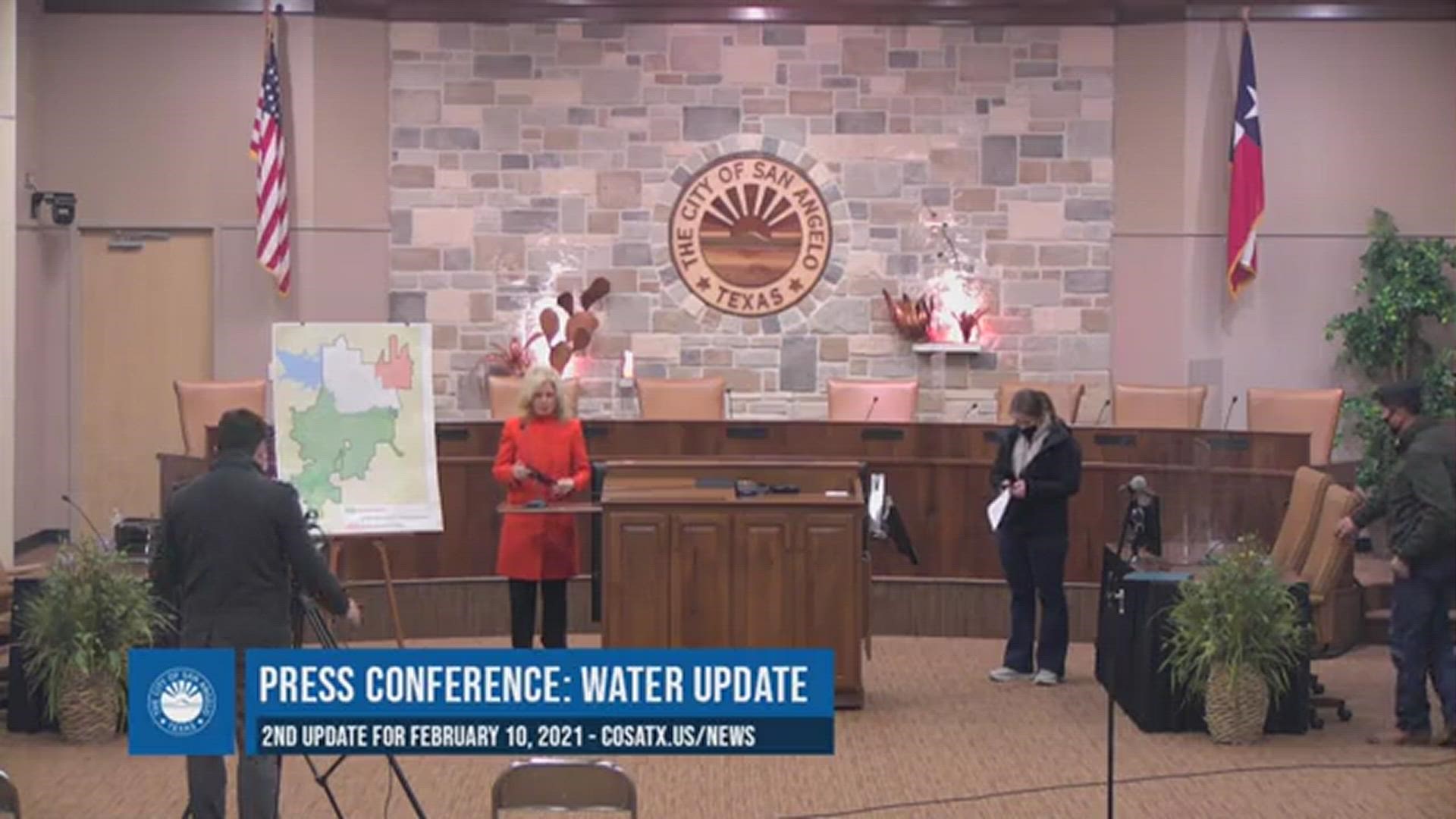SAN ANGELO, Texas — The City of San Angelo held a press conference late Wednesday evening to update the public on the ongoing water situation in the city.
"We want to make sure you have the information as soon as we get it from TCEQ," San Angelo Mayor Brenda Gunter said. "We understand how difficult this is."
City Water Utilities Director Allison Strube said some areas in the City have been upgraded from from "do-not-use" status to "do-not-drink."
Strube said 22 samples were sent for testing, and all results came back clean; however, three of the tests came back with benzene detected. The levels of those tests were within passing for drinking water standards, she said.
"It was all below the maximum contaminant level for drinking water standards of 5 micrograms per liter," Strube said. "With that information, we worked with TCEQ, they too also took additional samples this afternoon that they are waiting results on; but this is what led to us allowing the "do-not-use" area to go to "do-not-drink, consume or cook" with this water."
Pointing out the modified City map, Strube said areas in the green have no restrictions; areas in white are the "do-not-drink" zone meaning residents can shower, wash hands do laundry, but cannot consume or cook with water from the faucet.
The PaulAnn area is now marked as a red zone, meaning, Strube said it remains on the "do-not-use" advisory.
Strube stressed people in the white area of the map should not drink water from faucets. She said residents in that area should not cook, brush teeth, use ice from automatic dispensers, prepare coffee with water, or fill pet water bowls with water from faucets.
People in the "do-not-drink" and "do-not-use" areas should not boil water, because they "do not want to inhale the fumes," according to Strube.
She said TCEQ anticipates its samples to be returned Wednesday.
Josh Berryhill, associate vice president and technical director, ENPROTECH – From TCEQ standpoint, want to make sure, you do not want to boil water. Use bottled water for cooking, until the tests come back.
Restaurants in the "do-not-drink" area can open but only cook and wash dishes with bottled water or water brought in from an approved public water supply in a covered, sanitized container.

